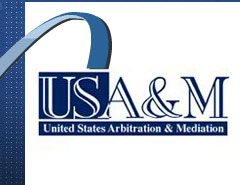Does the case have any of the following characteristics?
If one or more of the following characteristics apply, you should consider submitting a case to arbitration:
- The parties have reached their maximum authority for purposes of negotiation.
COMMENT: Whenever the parties have additional authority for movement they should consider mediation first. When the parties have reached their final offer and demand, arbitration may be the preferred option. - The parties want a binding resolution of the matter.
- The parties believe that the case involves fairly simple legal and/or damage issues.
- The parties want a decision in a short period of time.
COMMENT: Hearings can be set up fairly quickly. Therefore, the parties can often have a binding decision within 60 to 90 days from the date the case is submitted. Parties may want an arbitrator to make an immediate ruling at the conclusion of the hearing. - The parties want the rules of evidence to be more flexible.
COMMENT: Arbitration involves rules which can be amended or modified by the parties themselves; thus, if the parties want the rules of discovery to be made more flexible they can do so. (Any rules must be in conformance with the applicable arbitration statutes and acceptable to USA&M.) - The parties want the outcome to be within specified parameters.
COMMENT: Many parties like the “high/low” arbitration format. In a high/low arbitration, the parties specify that the award will be no higher than a certain amount and no lower than another amount. The arbitrators are not usually made aware of the parameters of the high/low, and make their awards based on the evidence. Any award which is not within the parameters of the high/low is then reduced or increased in order to conform with the parameters. High/low parameters are set forth in an independent contract that the parties execute prior to the arbitration. - The parties have been to mediation, and the case is one of the few that did not settle.
COMMENT: Once parties have participated in mediation, the issues have often been extensively discussed. There may be no reason to wait to get to court and perhaps wait even longer to get a ruling in court. Parties can proceed directly from mediation to arbitration, perhaps with the high/low parameters based on the negotiation stances of the parties at the conclusion of the mediation. The mediator of the case should not serve as the arbitrator. - The parties believe a hearing would be beneficial, and a rigid hearing like that in the courtroom may be traumatic to the client or other participants.
COMMENT: Arbitration is much more informal than a courtroom proceeding. The hearing can be held in a conference room in an informal manner. This type of proceeding may be less intimidating to parties or witnesses. - Parties or their counsel may wish to limit the amount of time involved in the arbitration hearing.
COMMENT: Parties can specify at the beginning of the arbitration process, through the arbitration contract, that each side will have a specified amount of time in which to present their case. This often encourages parties to get to the heart of the issues earlier, and to conduct whatever discovery is necessary only for presentation of the most critical matters, thus saving discovery costs. - The parties may have agreed on a specified amount of damages, but issues of liability must first be decided.
COMMENT: The parties may ask the arbitrator to make a binding award with regard to liability. For example, the arbitrator may determine percentages of liability to be allocated to each party. Once the percentages of liability have been determined, the parties often are willing to agree on a specified amount for damages. Defendants in a case could settle with the plantiff and later allocate damages through an arbitration. - The parties need a binding determination on one issue in order to proceed with other issues in the case.
COMMENT: Often it is one issue that is the “stumbling block” to parties’ resolving a case. By having an arbitrator make a binding award with regard to a certain issue, the parties may then proceed to negotiate the remainder of the case to settlement. - The parties may want an advisory opinion rendered by a former judge or respected attorney.
COMMENT: Arbitration need not be binding. All of the rules of arbitration and procedures associated therewith may be carried out on a non-binding format. In a non-binding arbitration, the arbitrator will give an advisory opinion only. - The case involves a large number of plaintiffs whose percentages of recovery must be determined.
COMMENT: An arbitrator can hear evidence and decide what percentage of a recovery each plaintiff is entitled to receive. This can expedite settlement negotiations by the plaintiff‘s attorney(s), and avoid further problems in determination of each plaintiff‘s percentage of recovery. The plaintiffs simply agree prior to the arbitration that they will be bound by the percentage of recovery awarded by the arbitrator. The attorney then proceeds to negotiate a settlement on behalf of all the plaintiffs.
NOTE: Nothing contained herein is intended to give legal advice. Individuals should always consult with an attorney before entering into a contract.

